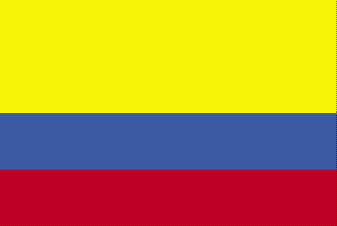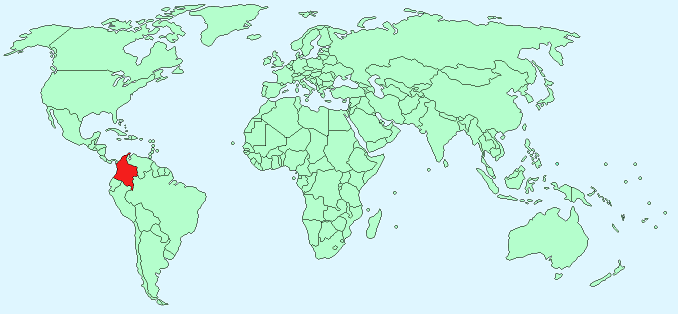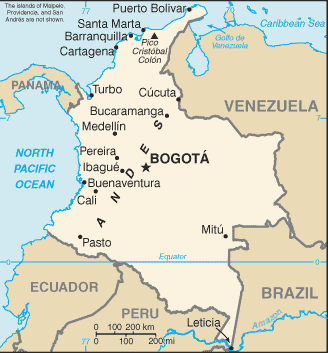Republic of Colombia


Continent – South America
Size – 1,138,910 km²
Geography – flat coastal lowlands, central highlands, Andes mountains, eastern lowland plains
Language – Spanish
Religion – 90% Roman Catholic, 10% other
Monetary Unit – Peso
Natural Resources – petroleum, natural gas, coal, iron ore, nickel, gold, copper, emeralds
Agriculture – coffee, cut flowers, bananas, rice, tobacco, corn, sugarcane, cocoa beans, oilseed, vegetables; forest products; shrimp
Industry – textiles, food processing, oil, clothing and footwear, beverages, chemicals, cement; gold, coal, emeralds

Neighbouring Countries – Venezuela, Brazil, Peru, Ecuador
Population – 46,245,297 (2014 estimate)
Population Growth Rate – 1.43%
Average Life Expectancy – 72.2
Capital City – Bogota (7,878,783)
Highest Mountain – Pico Cristobal Colon (5,775 m)
Longest River – Magdalena (1,540 km)
Climate – Coast and eastern plains – Tropical, warm and wet 23°C to 32°C, northern highlands cooler 9°C to 19°C
Yearly Rainfall – Coast and eastern plains – 708 cm (approx), northern highlands – 105cm (approx)
Plant Life – More than 45000 plant species including grasses, small herbaceous plants, low bushes, vegetables, fruits, corn, grasses, mosses, ferns, laurel, cedar, palm trees
Animal Life – puma, raccoons, mustelids, tapir, peccary, deer, large tropical rodents, sloths, anteaters, opossums, and several types of monkey
Bird Life – More than 1,500 bird species
Harvard Reference for this page:
Heather Y Wheeler. (2015). Colombia. Available: https://www.naturalhistoryonthenet.com/Facts_Figures/Country_Facts/colombia.htm. Last accessed Monday, July 18, 2016
Facts and Figures Pages
